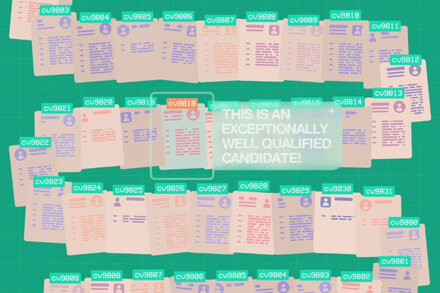
The landscape of job recruitment is undergoing a significant transformation, as artificial intelligence (A.I.) tools become increasingly central to the initial screening process. Companies are deploying sophisticated A.I. algorithms to sift through thousands of résumés, aiming to streamline hiring and identify the most suitable candidates efficiently. However, this technological shift has given rise to a new phenomenon: job applicants actively attempting to “trick” these A.I. systems to gain an advantage.
Recruiters have adopted A.I.-powered applicant tracking systems (ATS) and résumé scanners to manage the high volume of applications received for open positions. These systems are designed to identify keywords, phrases, and formatting that align with job descriptions and company requirements, effectively acting as a first-pass filter before human eyes review applications. Proponents argue that A.I. enhances efficiency, reduces bias by standardizing the initial review, and ensures that candidates who meet specific criteria are not overlooked.
“Our goal with A.I. is to optimize the initial screening, not to replace human judgment,” explains Sarah Chen, Head of Talent Acquisition at a major tech firm. “It helps us cut through the noise and focus on candidates who genuinely possess the skills and experience we’re looking for. However, we’re keenly aware that applicants are evolving their strategies too.”
Applicants Develop Counter-Strategies
As A.I. in hiring becomes more prevalent, job seekers are increasingly aware of how these systems operate. This awareness has spurred a range of strategies designed to bypass or manipulate A.I. filters. Common tactics include “keyword stuffing,” where applicants embed numerous industry-specific terms and phrases, sometimes even in white text that is invisible to the human eye but detectable by A.I. scanners. The goal is to maximize the résumé’s relevance score within the ATS.
Another emerging trend involves the use of A.I. tools by applicants themselves. Job seekers are leveraging generative A.I. models to craft highly tailored résumés and cover letters that are specifically optimized to appeal to A.I. scanners. These tools can analyze job descriptions and suggest keywords, phrasing, and structural elements that are likely to score highly, creating a digital “arms race” between employer A.I. and applicant A.I.
“It feels like a necessary evil,” says Maria Rodriguez, a marketing professional recently on the job market. “I spend hours analyzing job descriptions, feeding them into an A.I. tool, and then carefully crafting my résumé based on its suggestions. If I don’t, I worry my application won’t even be seen by a human. It’s not about being dishonest, it’s about playing the game.”
Ethical Concerns and the Future of Hiring
The proliferation of these tactics raises significant ethical questions for both recruiters and applicants. Critics worry that A.I. filtering, while efficient, may inadvertently screen out highly qualified candidates who don’t optimize their résumés for algorithms. There’s also concern about the potential for bias if A.I. systems are trained on data sets that reflect historical hiring inequalities, or if they prioritize buzzwords over genuine talent and potential.
For companies, the challenge lies in developing A.I. systems that are sophisticated enough to discern genuine qualifications from algorithmic manipulation. Recruiters are exploring more advanced natural language processing (NLP) to understand context rather than just keyword presence, and incorporating assessments that evaluate skills beyond what’s listed on a résumé. The ultimate goal remains to find the best talent, but the path to that talent is becoming increasingly complex.
“This back-and-forth highlights a critical need for transparency and continuous refinement in A.I. recruitment,” states Dr. Evelyn Reed, an expert in A.I. ethics. “If applicants are forced to game the system, it suggests the system isn’t optimally serving its purpose. The focus should be on creating tools that genuinely identify potential and reduce bias, rather than encouraging a compliance checklist mentality.”
As A.I. continues to evolve, the dynamic between recruiters and applicants is expected to become even more nuanced. Both sides are adapting, pushing the boundaries of technology and human ingenuity in the ongoing quest for the perfect professional match.
Source: Read the original article here.





